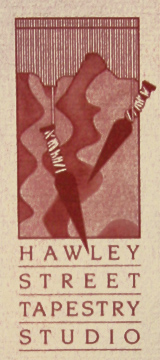SLIDE-LECTURES
“An act of creation is an act of self-acceptance.”
(Richard Hugo, The Triggering Town)
IT‘S NOT JUST UNICORNS!
For many people, tapestry means unicorn. But mythical motifs constitute only one of many elements that make for a good tapestry. This talk challenges narrow presumptions about the medium, shows how contemporary work draws on its historical roots and presents tapestry in its legitimate, unlimited range.
A STAGE in PARIS
Tapestry at the French National Manufacture of Tapestry, les Gobelins. History.
Physical plant. Current output. Techniques. Teaching methods.
POLISH FIBERART in its HISTORICAL CONTEXT
Polish artists working with fiber rank among the most accomplished in the world.
This slide lecture traces the historical roots and displays the current achievements.
TELLING TALES
The developing visions of half a dozen contemporary fiber artists.
MAKING INTERNATIONAL CONNECTIONS
Fiber art from Eastern and Western Europe, Australia, New Zealand, Canada.
FIBER ART TODAY
Prevailing visual and material concerns of fiber artists:
the human body, the table, the wall, the floor, the field;
weaving, knitting, crocheting, sewing, twining, sculpting, embroidering, felting;
wool, cotton, silk, rayon, lurex; sewing thread, embroidery silk, twine, wire;
canvas, dish towel, paper, newsprint, wood.
THINKING SMALL
A tapestry does not have to cover the wall of a chateau.
Some of the great jewels of tapestry,
both historical and contemporary, are small in size and big in impact.
This talk will look at a range of these pieces.
Workshops
THE SUN and THE MOON and THE STARS at NIGHT
standard tapestry shapes
Some basic techniques of hand-woven tapestry, in the French tradition:
Warping the loom. Making the heddles. Using the bobbin.
Weaving a new kind of cloth: texture, weight, color interplay.
Marking the warp. Angles and curves. Weft interlocks. Open and closed threads.
Constant discussion:
What is tapestry? What elements make it work best? What is the visual range?
What does contemporary tapestry look like?
Suitable for: rank beginners (who know weaving basics), those who wish to
improve their tapestry techniques, anyone who wants to approach tapestry
in a new way.
TROUBLESHOOTING for TAPESTRY
A workshop with several points of view–
Technical questions: Can you weave an almost vertical line that shifts across
single warps and without losing its upward movement? Can you give the effect
of transparency? How do you go about interpreting a cartoon?
Aesthetic questions: Are there best possible visual subjects or styles for tapestry?
Are you trying to copy a painting or a photograph? What makes a tapestry itself
and nothing else?
Urgent questions: What are you trying to weave now? Where are you getting stuck?
Suitable for: experienced artists with some knowledge of tapestry–and some
frustrations/questions with it.
THE CIRCLE GAME
(for experienced tapestry weavers)
Most tapestry weavers want to weave circles, want to weave curves that truly turn.
And most despair of ever being able to do so.
The basic grid format of weaving confounds them.
But the French tapestry weavers know how to do it–and they taught me.
In one day, I can teach experienced tapestry weavers how to weave circles that look
like circles (not eggs or squares)–how to analyze the shape, how to mark it on the
warp, and which techniques confound the grid so that the circle will go ’round.
Best for: experienced tapestry weavers
